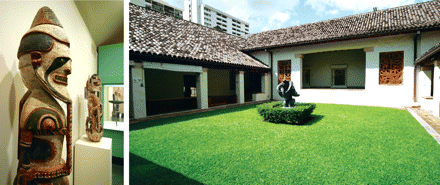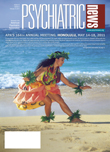Most visitors do not undertake the long journey to Honolulu to immerse themselves in its arts scene, but several noteworthy museums can boast of world-class collections of local art and art from nearly all the world's cultures.
The state's premier art venue is the Honolulu Academy of Arts, founded in 1927 and now with a collection that runs to 60,000 works in multiple state-of-the-art galleries. The original building is constructed in a classic Hawaiian style, that is, as a low-rise building with open-air, flower-scented courtyards and a tile roof. It has been named a national and state historic site. Several additions have joined the original structure, including an interactive gallery aimed at children, a café, and gift shop.
Among the galleries are those devoted to Hawaiian art, of course, and art from Oceania, Korea, the Philippines, India, Indonesia, and Southeast Asia. There are also galleries devoted to 19th- and 20th-century art from the Americas and Europe.
Special Exhibits to See
Among the special exhibits that will be mounted at the Honolulu Academy of Arts during the APA annual meeting in May is one titled "Exquisitely Modern: 50 Works From Herbert and Dorothy Vogel." The Vogels, New York art collectors, donated these modern-art masterpieces from the mid-20th century to the academy in 2008, and the exhibit will supplement the Vogels' collection with other works from the same period.
Also on exhibit at the academy in May will be "Chasing the Flaming Pearl: Discovering the Dragon in Chinese Textiles." As the museum points out in its announcement about this exhibit, "In Asia the dragon is revered as a divine mythical creature, a potent symbol of strength, good fortune, and transformation—often portrayed as chasing after a luminous pearl." In Buddhism, the jewel is believed to grant all wishes and is often portrayed as "a small red or white sphere ringed by a fiery blaze... a metaphor for wisdom, enlightenment, and spiritual essence."
Ready to Visit Shangri La?
And then there is Shangri La. Housed in a mansion that tobacco heiress Doris Duke built as a vacation residence in the mid-1930s, it combines features of Islamic and Hawaiian culture and design. The elaborate gardens reflect traditional Hawaiian design elements. (Duke had traveled to the Middle East and then Hawaii for her 1935 honeymoon and was so impressed with the styles native to both areas that she instructed her architect to blend them in her new home.)
Soon after she moved in, Duke, who was one of the world's wealthiest women, began filling the home with Islamic art and objects, and continued to expand the collection until her death in 1993. Shangri La now contains about 3,500 pieces. Among the acquisitions she had installed in the home—which is certainly not a traditional museum—are painted ceilings, elaborately carved doorways, intricate mosaics, and an impressive array of textiles.
Shangri La's exhibits cover a broad range of themes and topics that have characterized Islamic art. Some are religious in nature, and many others reflect everyday life in cities, rural villages, and the courts of the ruling class and of nomadic tribes. Objects date back as far as 1500 B.C. and as recently as the 20th century. Duke commissioned several of the newer works from artists throughout the Islamic world.
As the museum's Web site explains, "Accompanied by the sound of crashing waves, fountains, and bird calls, Shangri La is truly a multi-sensory experience."
Visits to Shangri La are by guided tour only and require advance reservations. Tickets include van transportation from downtown Honolulu (and admission to the Honolulu Academy of Arts). The tours operate Wednesday through Saturday.

